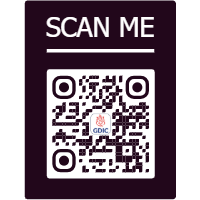
This article will discuss the Total Leukocyte Count test. We will also address some common questions related to the Total Leukocyte Count test.
What is the Total Leukocyte Count?
This test is used to check the total number of white blood cells also known as (leukocytes) in a person’s bloodstream. These white blood cells play an important role in the human immune system in the body defending against viruses, infections and diseases. WBC include neutrophils, lymphocytes, monocytes, eosinophils and basophils each of them has a specific purpose to serve in the human body and in its immune system.
What is the Purpose of Getting a Total Leukocyte Count Test?
The TLC blood test is fundamental in measuring the human body’s immune system potential by measuring the total number of leukocyte levels in the bloodstream, It helps to identify the abnormalities in your leukocyte level and it’s usually a part of (CBC). Total Blood Count test which measures all types of cells in blood stream. The normal range of TLC can show many conditions which include many infections, inflammatory disorders, auto-immune diseases and also some types of leukaemia. Therefore, monitoring TLC is particularly valuable in assessing the body’s ability to maintain the immune system of a human.
When Should You Get the Total Leukocyte Count Test?
A Doctor may recommend this test for the following reasons –
- Suspected Infections – If a person experiences various symptoms of infections such as persistent fever, chills, body aches or unusual fatigue then the the doctor may recommend a TLC test. An elevated WBC count indicates an ongoing infection and specific types of elevated WBC may indicate which type of infection it may be.
- Persistent Fatigue or Weakness – Unexplained or sudden weakness/fatigue may require a person to get this test. An abnormal amount of white blood cells may indicate a sign of ongoing illness.
- Respiratory Or Allergic Issues – In some cases of respiratory or allergic problems, a TLC test may be recommended by some doctors to assess the immune system's response to various diseases.
- Preoperative Assessment – Before certain medical procedures or surgeries doctor may order a TLC test to ensure the immune system of a person is working properly or not, This ensures that there is as minimum risk as possible for postoperative infections in the body which helps in smoother recovery.
What Are the Preparations Needed for the Total Leukocyte Count Test?
- Begin by informing your healthcare provider of your medical history and medications.
- For this test, while fasting is not required, follow up with the doctor if any specific instructions are given by him.
- Stay hydrated and wear clothes with easily accessible sleeves which helps in getting quick access to the arms in getting the blood sample for collection.
- Remain relaxed before giving the blood samples to get he accurate results because if a person if nervous or stressed it shows in the test result which is not accurate.
- Follow up with the medication if the doctor is giving any specific instructions for patients to take before the test.
- Commute openly to the doctor about any medications or any changes regarding your health as in some cases doctor may suggest some medication before the test or may give you some specific instructions to follow through before the test.
What Are the Risks or Complications With the Total Leukocyte Count Test?
Generally, the TLC test is a low-risk procedure, with very little to no risks. However, in some cases, common risks include minor discomfort or bruising at the blood collection site. In extreme cases, a person may faint due to elevated nervousness or in some cases get an infection.
What is the Procedure Procedure for the Total Leukocyte Count Test?
- The TLC test starts with a collection of blood sample
- A professional phlebotomist cleans the selected areas mainly the inside of a person’s elbow with an antiseptic.
- A tourniquet is applied to a person to make the veins more visible to get easy access.
- The blood sample is collected using a test tube and a sterile needle.
- Once the sample is obtained, the needle is removed then pressure is applied using cotton to the wound to stop the bleeding.
- Then collected sample is labelled then sent to the labs for testing and further analysis.
- Technicians in the lab then use automated machines to count the number of WBCs in the blood. The results are typically available within a day or two.
Range and its meaning in total leukocyte count test –
Normal Range
The normal range for a TLC test is 4000-11000 per micro-litre of blood, It usually means a person's immune system is healthy and is working fine.
Low Range
The low range for the TLC test is less than 4000 per micro-litre of blood, This indicates that the person’s immune system is weak and the doctor may suggest some vitamins to take to strengthen the immune system.
High Range
The high range for the TLC test is above 4000 per microliter of blood, This indicates that a person may be suffering from some infection, allergies or some diseases. The doctor may suggest some medications according to the results of the test and get the immune system of a person back in order.
Do Medications Affect the Results of Total Leukocyte Count Tests?
Yes, some medications affect and influence a person’s test result. Some medications like corticosteroids or some chemotherapy agents, can either elevate or sometimes suppress a person’s WBC count impacting the accuracy of the results of the TLC test.
Conclusion –
Understanding and monitoring a person’s TLC test is crucial to getting a perfect insight if the immune system is working properly or not. As discussed above if the test results are in range then the person is healthy and if not some medications can help it by following up with a doctor’s instructions helps in getting the immune system back on track and helps in maintaining it regularly.
Frequently Asked Questions (FAQs) –
What happens if the leukocyte count is high?
If the count is high it may indicate that a person is suffering from infections, allergies or some diseases which can be determined correctly by further testing.
What happens if the leukocyte count is low?
If the count is low then it means the person’s immune system is weak and is more prone to getting sick but with some medications suggested by the doctor, the immune system can be strengthened again.
How to reduce leukocyte count?
While some medications suggested by the doctor help the natural process include
taking some vitamin C which helps regulate WBC count
What food decreases leukocyte count?
A high intake of vegetables is said to decrease elevated levels of WBC and help in
regulating and maintaining the immune system of the body.
Which food is best for WBC?
Vegetables and fruits with high-carotene are said to be good for WBC like carrots, pumpkin, squash, apricots, sweet potatoes and mango.













